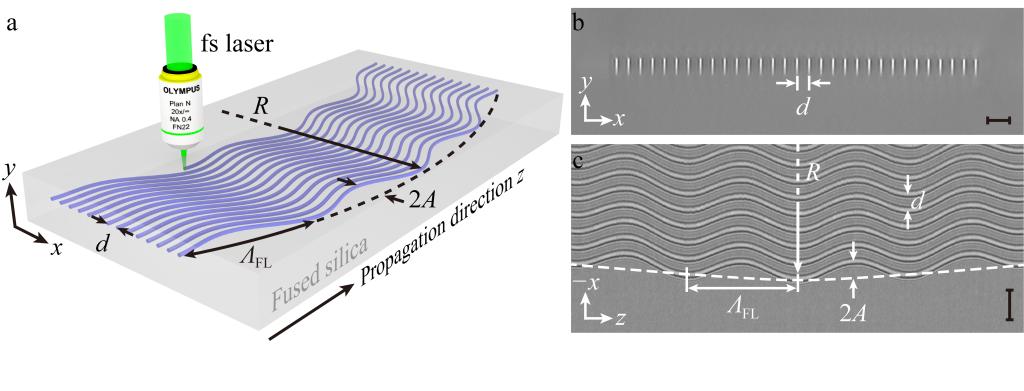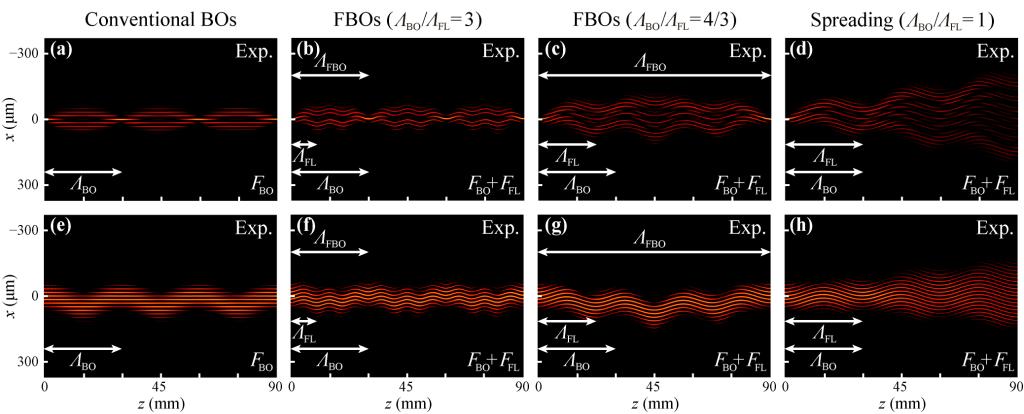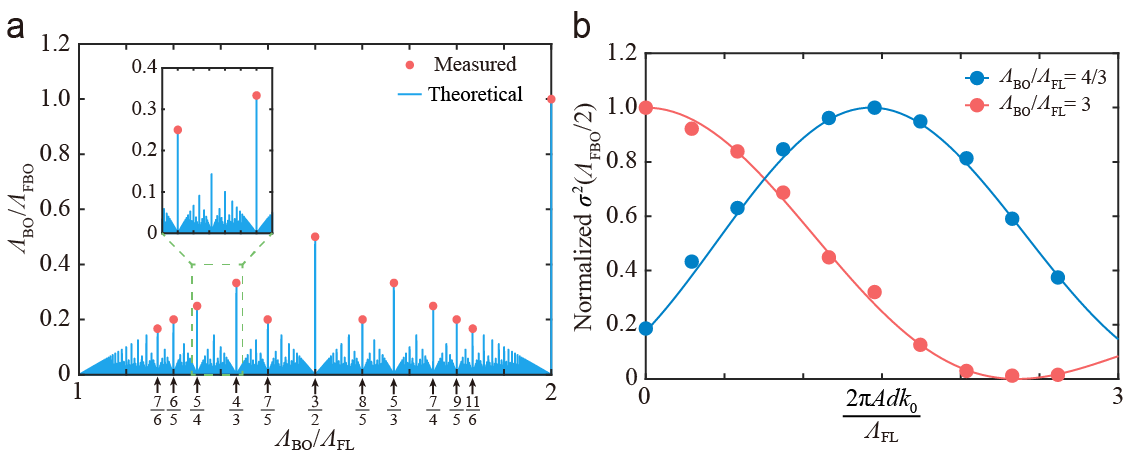Recently, Professor Xuewen Shu's research team from Wuhan National Laboratory for Optoelectronics, Huazhong University of Science and Technology, together with Professor Xiankai Sun's research team from The Chinese University of Hong Kong, have published a paper titled Visual observation of photonic Floquet–Bloch oscillations in Light: Science and Applications.
Bloch oscillations (BOs), an important transport phenomenon, have been studied extensively in static systems. Recently, the exploration of BOs in periodically driven quantum systems, equivalent to Floquet systems, has drawn tremendous attention because their exotic characteristics are profoundly distinct from those in static systems. Specifically, two types of Bloch-like oscillations have been investigated as quasi-Bloch oscillations (QBOs) and super-Bloch oscillations (SBOs). However, the inherent connection among these existing BOs in Floquet systems remains elusive, and a general theory concerning BOs in Floquet systems needs to be developed. Furthermore, as a key to unraveling the mechanism of the underlying transport, visual observation of BOs in Floquet systems remains largely unexplored in experiments.

Figure 1. Geometry of the photonic lattice. (a) Schematic of a one-dimensional lattice composed of evanescently coupled waveguides with a combined bending trajectory, i.e., a superposition of circular bending trajectory and periodic bending trajectory. (b) Cross-sectional optical microscope image of the fabricated sample. Scale bar, 30 μm. (c) Top-view optical microscope image of the fabricated sample with a harmonic modulation. Scale bar, 30 μm.
This work focuses on BOs in photonic Floquet lattices. By harnessing notions from photonic analogy, they have proposed a generalization of the existing BOs in photonic Floquet lattices, namely the photonic Floquet–Bloch oscillations (FBOs), which refer to rescaled photonic Bloch oscillations with a period ɅFBO of extended least common multiple of the modulation period ɅFL and the Bloch oscillation period ɅBO. The photonic FBOs occur for arbitrary Floquet modulation when the rational ratio of the Floquet modulation period ɅFL to the Bloch oscillation period ɅBO is non-integer. Under this framework, the conventional QBOs and SBOs can now be unified and treated as two special cases of FBOs. By employing waveguide fluorescence microscopy, they directly visualized the breathing and oscillatory motions of photonic FBOs in femtosecond-laser-written waveguide arrays. Significantly, they experimentally investigated two exotic properties of photonic FBOs, namely the fractal spectrum and fractional Floquet tunneling. With this insight, they suggested that photonic FBOs constitute a unique transport phenomenon on their own, in addition to being a generalization of the existing BOs in Floquet systems.
To visualize the Bloch oscillations in a photonic Floquet lattice, they considered an array of circular bending optical waveguides with a periodic modulation. The spatial evolution of low-power light in the proposed lattice is analogous to the temporal evolution of noninteracting electrons in a periodic potential subject to an electric field. The propagation coordinate z acts as time, and the curvature of waveguides is perceived as an effective electric field force acting on light waves. The circular bending trajectory introduces a constant electric field force responsible for BOs. The periodic bending trajectory introduces a periodic electric field force, which serves as the Floquet modulation. Therefore, the proposed lattice can support an experimental realization of Bloch oscillations in a photonic Floquet lattice. In the experiments, they implemented visible-light excitation by a He-Ne laser (633 nm) and captured fluorescent signals (650 nm) emitted from the waveguides. The top-view fluorescent signal records the intricate details of continuum evolution, which enables accurate quantitative analysis. For both single-site and broad-beam excitations, the visual observations of BOs in photonic Floquet lattices and the corresponding quantitative analyses have excellent agreement with the respective simulated results.

Figure 2. Experimental results of BOs in photonic Floquet lattice. (a)-(d) Fluorescence microscopy images of the breathing modes under single-site excitation. (e)-(h) Fluorescence microscopy images of the oscillating modes under broad-beam excitation. A coordinate transformation that maps circular arcs into straight lines was digitally applied to the fluorescence images.

Figure 3. Fractal spectrum and fractional Floquet tunneling of FBOs. (a) Fractal spectrum of FBOs. The inset is a close-up spectrum at a finer scale, which shows the property of self-similarity of this spectrum. (b) Fractional Floquet tunneling of FBOs. The Floquet-induced rescaling of the FBO amplitude follows a linear combination of fractional-order Anger and Weber functions.
Photonic Floquet–Bloch oscillations are essentially a coherent phenomenon that can readily be extended to diverse physical systems such as ultracold atoms, synthetic frequency lattices, and quantum walks. The visual observation of photonic FBOs is a key to understanding the underlying transport mechanism, which has a significant impact on both fundamental research and practical applications. For fundamental research, the simple visualization of the phenomenon and the high control of the fabricated structure enable further exploration of a branch of fundamental phenomena involving FBOs, such as the interplay between FBOs and binary lattices, non-Hermitian lattices, and optical nonlinearity. For practical applications, the demonstrated manipulation of optical waves can be implemented in diverse wave systems and may offer new insight into wide applications in wave manipulation, signal processing, high-efficiency frequency conversion, and precision measurement.
This work was supported by the National Key Research and Development Program of China, the National Natural Science Foundation of China, the Research Grants Council of Hong Kong, and The Chinese University of Hong Kong (Group Research Scheme). The first unit for this research is the Wuhan National Laboratory for Optoelectronics, Huazhong University of Science and Technology.
Link:https://www.nature.com/articles/s41377-024-01419-z